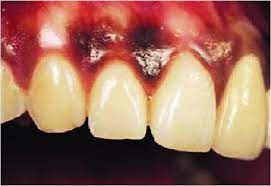
Ethnic Pigmentation
Ethnic pigmentation refers to the natural variations in skin color that occur among different ethnic groups. The amount of pigment in the skin, called melanin, determines skin color. People with more melanin have darker skin, while those with less melanin have lighter skin.
Introduction:
Ethnic pigmentation is not a measure of a person’s race or ethnicity, but rather a physical characteristic that can vary within and among different racial and ethnic groups. There is a wide range of skin tones and complexions within and among different ethnic groups, and skin color is not a reliable indicator of a person’s ancestry or cultural identity.
What Is Ethnic Pigmentation:
Ethnic pigmentation refers to the natural variations in skin color that occur among different ethnic groups. It is a physical characteristic that is determined by the amount of pigment in the skin called melanin. People with more melanin have darker skin, while those with less melanin have lighter skin. Ethnic pigmentation is not a measure of a person’s race or ethnicity, but rather a physical characteristic that can vary within and among different racial and ethnic groups. There is a wide range of skin tones and complexions within and among different ethnic groups, and skin color is not a reliable indicator of a person’s ancestry or cultural identity.
How To Treat The Ethnic Pigmentation:
There are a few options for treating ethnic pigmentation, also known as hyperpigmentation. The most effective treatment will depend on the cause and severity of the hyperpigmentation. Some options for treating ethnic pigmentation include:
- Bleaching creams: These creams contain hydroquinone, a skin-lightening agent that can help to fade hyperpigmentation.
- Chemical peels: A chemical peel can help to exfoliate the skin, removing the top layers of skin and revealing newer, smoother skin underneath.
- Microdermabrasion: This treatment uses a device to exfoliate the skin and remove dead skin cells, which can help to improve the appearance of hyperpigmentation.
- Laser treatments: Laser treatments, such as intense pulsed light (IPL) therapy, can help to fade hyperpigmentation by targeting and destroying the pigment-producing cells in the skin.
It is important to consult with a dermatologist or other healthcare professional before starting any treatment for hyperpigmentation. They will be able to recommend the most appropriate treatment based on the cause and severity of the hyperpigmentation.
Ethnic Pigmentation Pros:
It is not accurate or appropriate to describe ethnic pigmentation, or skin color, as having pros or cons. Skin color is a physical characteristic that is determined by genetics and is not a measure of a person’s worth or value. All individuals, regardless of their skin color, are deserving of respect and should be treated with dignity.
It is important to recognize and challenge any beliefs or attitudes that associate certain skin colors or physical characteristics with superiority or inferiority. It is also important to recognize and challenge the ways in which societal norms and beauty standards have historically privileged certain skin tones and physical characteristics over others.
Ethnic Pigmentation Cons:
It is not accurate or appropriate to describe ethnic pigmentation, or skin color, as having pros or cons. Skin color is a physical characteristic that is determined by genetics and is not a measure of a person’s worth or value. All individuals, regardless of their skin color, are deserving of respect and should be treated with dignity.

If you want to get amazing benefits by using this link
It is important to recognize and challenge any beliefs or attitudes that associate certain skin colors or physical characteristics with superiority or inferiority. It is also important to recognize and challenge the ways in which societal norms and beauty standards have historically privileged certain skin tones and physical characteristics over others.
However, it is important to recognize that people with certain skin tones may experience discrimination or bias due to their skin color. This can take the form of racism, colorism, or other forms of discrimination. It is important to actively work to combat these forms of discrimination and promote equality for all people, regardless of their skin color.




